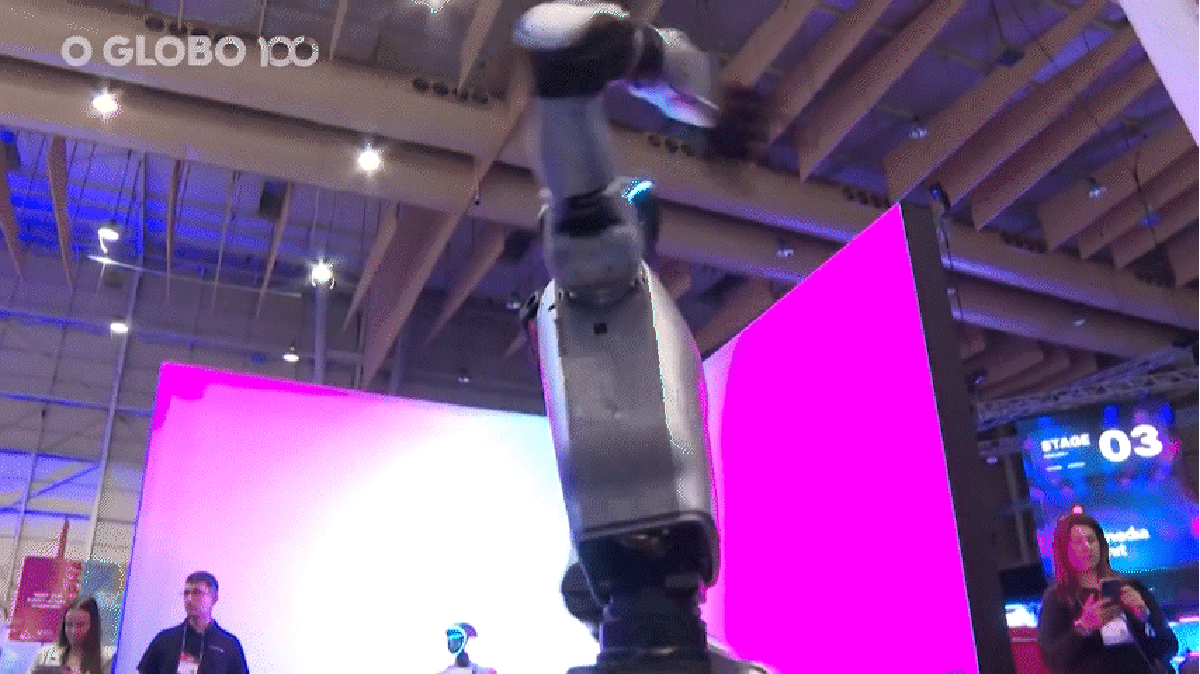
China has already surpassed the United States in humanoid robot leadership. Paddy Cosgrave, CEO of Web Summit, Europe’s largest technology event, talks about the current state of work at the forefront of technology.
- Web Summit: Event focusing on new stage of AI and stage dedicated to China begins in Lisbon
- To the sound of AI: A dancing robot attracts attention at a technology event in Portugal. watch video
In an interview with GLOBO, he said American companies are not yet ready to demonstrate robots at events like the one in China. For example, the Unitree dancers stole the show as they passed through a conference venue in Lisbon.
— The American humanoid robot company behind these amazing videos isn’t yet ready to show off its robots in the field. However, Chinese companies do not have this problem. When asked what surprised him most about the event, he answered:
— For me, the leadership in robotics used to belong to the United States and a little bit from South Korea and Japan, but now it has moved to China — he emphasized.
- Watch the video: Russian humanoid robot falls face down on stage during Moscow premiere
Dancing robots to be introduced at Lisbon Web Summit
Next time, the executive hopes to attract at least three new Chinese companies manufacturing robots to the Portuguese capital. In particular, he said, the “humanoid” type refers to machines that resemble humans, typically programmed to perform daily tasks or operate in factories.
The 4th Web Summit will be held in June 2026 in the city of Rio de Janeiro. One of the plans is to take robots from Chinese startup Unitree to conferences in Latin America, he said.
— Let’s see if we can convince them. I think it will be a great opportunity.
- Between the Jetsons and the real world: Humanoid domestic robots promise autonomy but rely on a human eye behind the camera
The Irish businessman’s hope is that the Rio edition will attract an even larger international audience, including Americans, Central Americans, Europeans and especially Portuguese, as there are “more Brazilians than ever” in Lisbon.
For Cosgrave, bringing Chinese innovation to Brazil doesn’t seem like a big challenge. He noted that despite the US government’s stance on applying trade tariffs, the country is diversifying its business partners and strengthening ties with China to explore new markets.
In the administration’s view, trade tariffs would be counterproductive and further harm the United States itself. He argued that this measure ultimately reflected the bias of historical superiority that still characterizes Western countries, with the belief that their values and systems are “superior.”
- Images and portraits: Introducing 5 humanoid robots worth approximately 1 million reais
According to him, this view still prevents the Western world from learning from other models, especially China.
The good news, Cosgrave says, is that this change in perspective seems inevitable given the growing weight of emerging markets.
-The eyes of people in the Western world are opening, because it is no longer possible to ignore the global South, the BRICS, which is the majority of the world, he said, citing the Brazilian payment system Pix, which has attracted the attention of President Trump, as an example. —See “Pix.” How did Brazil come to have an innovative payment system that grew from 0% to more than 40% of all transactions in about four years?—he asks.
- The era of digital cupid: See how AI is changing dating apps to ensure you get the perfect match
The Web Summit founder said the future of technology can be shaped by a more pluralistic vision.
— Innovation comes from many places, including Brazil, but especially from China.



